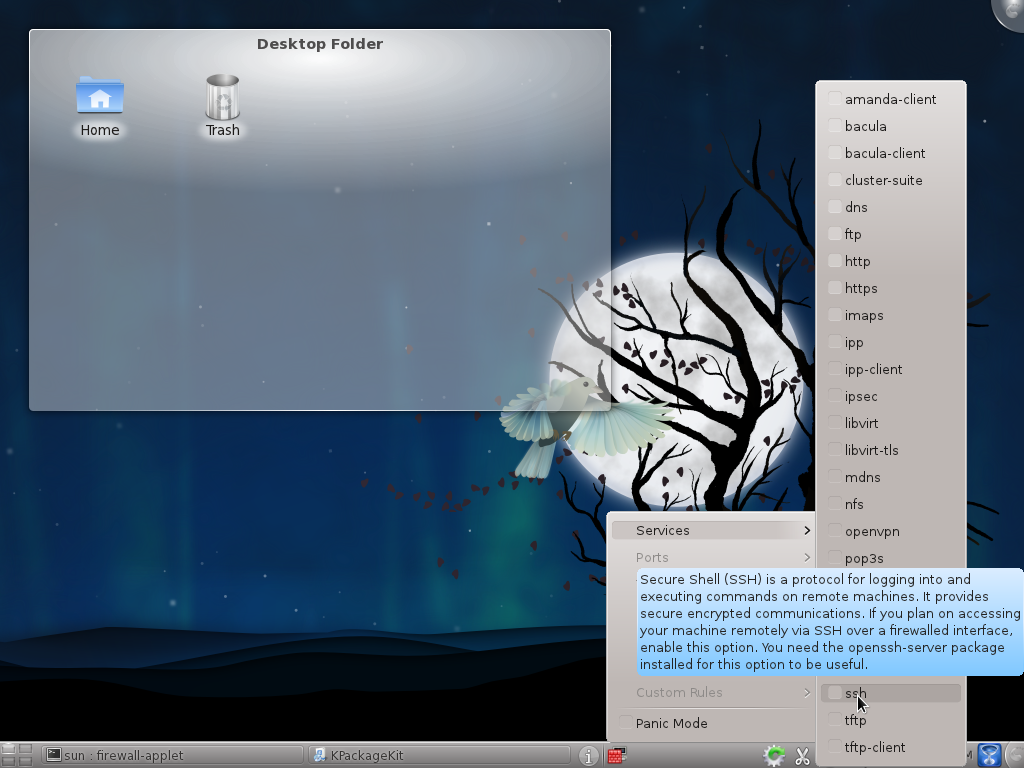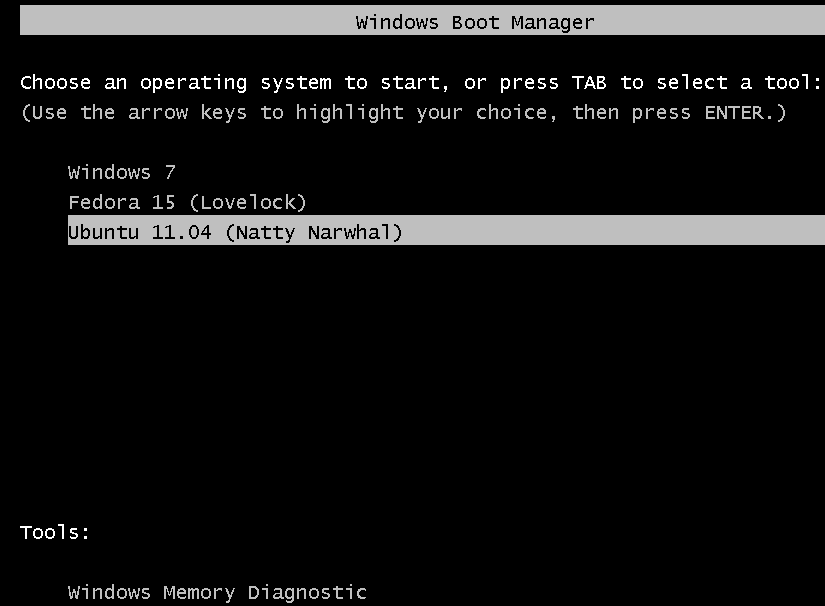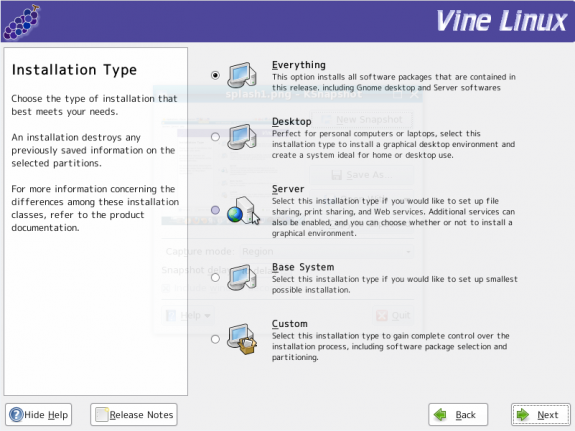Aside from the ports and services listed on the main window, additional ports from a list of more than 60,000+ tcp and udp ports may be added from the Other Ports window. Like the ssh service, any port you add and enable from here will be accessible to all hosts and networks.

You can add custom rules from the Custom Rules window. However, adding custom rules requires loading the rule(s) from a file, which in turn requires that you know how to write IPTables rules.

New to Fedora 15 is FirewallD, a firewall daemon with a D-Bus interface, which is being designed to provide a dynamic frontend to the firewall application, so that reloading is not required when a change is made to the firewall rules. It is not installed by default, but if you do, you also need to install its applet. With the applet installed, you can make changes to the firewall from the panel, without needing to launch another application. And if it lives up to its billing, you will not need to reload or apply changes when a new rule or service is added.
If you look closely at the image below, you will see a “Panic Mode” checkbox. I could not determine exactly what enabling that mode is supposed to accomplish, but the applet crashed every time I clicked on the checkbox. I could not find any reference to a “Panic Mode” in FirewallD’s official page.
FirewallD has a very user-friendly command line utility called by firewall-cmd. For example, to enable access to the Secure Shell server, all you need to type is, firewall-cmd –enable –service=ssh. And to enable the same service for, say, 30 seconds, you would type firewall-cmd –enable –service=ssh –timeout=30.
FirewallD is expected to be the default on Fedora 16 onwards. You may read more about it here.

Another new security feature in Fedora 15 is the removal of setuid applications. These are applications that run with the permissions or privileges of the applications owner or group. Potentially, they can be a security nightmare. More about this feature here.
Final Thoughts: I think Fedora 15 is a decent distribution. Because of the projects philosophical stance on Free Software, there are certain features that are not expected to work out of the box. However, there are other features that have nothing to do with that philosophical stance that did not work as expected. I am referring, of course, to the state of Amarok, the default music player, but also to printer configuration. On many of the top distributions, a connected printer is automatically configured, but not so on Fedora 15 KDE and the other Fedora 15 Spins that I have reviewed. I am yet to review Fedora 15, the main Fedora 15 version, but judging from how a connected printer is configured on Fedora 14, I do not think it will be anything like the situation on these Spins.
These are the features that separate the good from the not-so good distributions, so I expect, hope, that when Fedora 16 rolls outs, features that should work out of the box, like automatic printer configuration, will work. And something has to be done about Amarok.
Resources: Torrent and direct-download links for 32- and 64-bit platforms of Fedora 15 KDE are available for download here. Information about all the Fedora Spins are available from the Fedora Spins page. Support questions for the KDE Spin may be posted on Questions & Answers and here.
Screenshots: View more screenshots from test installations of Fedora 15 KDE.
Desktop configuration in progress.

Fedora 15 KDE login screen.

Installed Internet applications viewed from the KDE Plasma Netbook Interface.

Installed graphics applications viewed from the KDE Plasma Netbook Interface.

Fedora 15 KDE desktop with the Lancelot menu.

You can have quality articles like this delivered automatically to your Feed Reader or Inbox by subscribing via RSS or email. This website now has a Question and Answer section. Use the commenting system for simple comments, but for more involved assistance, please use the Question & Answers section.








I liked your review alot thanks for your kind efforts, try to follow your blog weekly
I switched to Fedora KDE spin after the royal screw-up of GNOME 3 in latest Fedora. After years of using only GNOME and just trying KDE (I tried it a few times in KDE 3 days and never liked it back then) I decided to give KDE another chance, I didn’t have much to loose since it couldn’t be worse than GNOME 3. And it sure wasn’t bad, Quite the contrary: I found the new KDE to be extremely good. So other people from out LUG who were mostly switching to Kubuntu because of the similar disaster of Unity in Ubuntu were right. Anyways after playing nad getting used to KDE for about two weeks I made the decision to actually switch almost all my systems to Fedora KDE spin, One will still be left running Xfce since it is very very old and I doubt it could handle KDE well enough.
Thank you for the review.
In a previous article you mentioned that you planned to write an article about hardening security in Linux Mint.
Do you still intend to? I know I’d love to read it.
Keep up the good work.
Yeah, that article is still in the works. Hopefully, I’ll get to it soon.
Btw, thanks for being a loyal visitor.